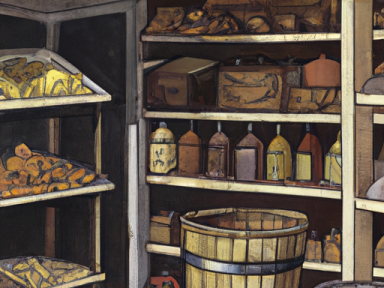
Food Preservation Techniques for Self-Reliance and Survival
In times of uncertainty and potential crisis, being able to preserve food for the long term is a crucial skill for self-reliance and survival. Whether you are a homesteader preparing for the winter months or simply want to be prepared for any kind of emergency, knowing how to preserve food can ensure that you have a stable source of nutrition when it may not be readily available.
Canning: A Time-Tested Preservation Method
One of the most popular and effective methods of food preservation is canning. Canning allows you to store a wide variety of foods such as fruits, vegetables, and meats in jars for an extended period of time.
The process of canning involves heating the food in the jars to a high temperature, which kills off any harmful bacteria and seals the jar. This prevents spoilage and contamination, allowing the food to be safely stored for months or even years.
Canning requires some basic equipment such as canning jars, lids, and a pressure canner or water bath canner, depending on the type of food being preserved. With proper sterilization and following recommended canning recipes, you can stock your pantry with a variety of home-canned goods that will sustain you in times of need.
Drying: Preserving Nutrients for the Long Haul
Drying is another ancient method of food preservation that has stood the test of time. By removing moisture from foods, you inhibit the growth of bacteria and other harmful microorganisms that cause spoilage.
One of the simplest methods of drying is air drying, where you let foods dry naturally in the open air. This method works well for herbs, fruits like apples or berries, and even some vegetables such as tomatoes. However, it is important to note that air drying can take longer and may not work well in humid environments.
An alternative to air drying is using a food dehydrator. Dehydrators are designed to gently and evenly remove moisture from foods, preserving their flavor and nutrients. Investing in a good quality dehydrator can greatly expand your ability to store a wide variety of foods for the long term.
Fermenting: Enhancing Flavors and Boosting Nutrition
Fermentation is a method of preserving food that not only extends its shelf life but also enhances its flavor and nutritional value. Through the natural process of fermentation, beneficial bacteria and yeasts convert sugars in the food into acids, alcohol, and gases, creating an acidic environment that inhibits the growth of harmful bacteria.
Common examples of fermented foods include sauerkraut, kimchi, pickles, and yogurt. Fermenting foods not only increases their shelf life but also adds probiotics and enzymes, which are beneficial for gut health and digestion. Having a good supply of fermented foods in your pantry can provide essential nutrients and immune-boosting properties during times of crisis.
Conclusion: Take Charge of Your Food Security
When disaster strikes or circumstances become uncertain, it is essential to have a plan in place for food security. By learning and implementing food preservation techniques such as canning, drying, and fermenting, you can ensure that you have a stable and nutritious food supply for you and your loved ones.
Start today by exploring the different methods and experimenting with different foods. Embrace the art of self-reliance and be proactive in ensuring your family’s survival. The peace of mind and security that comes from knowing you are prepared is invaluable. Take action now and take charge of your food security for a better and more resilient future.



GIPHY App Key not set. Please check settings